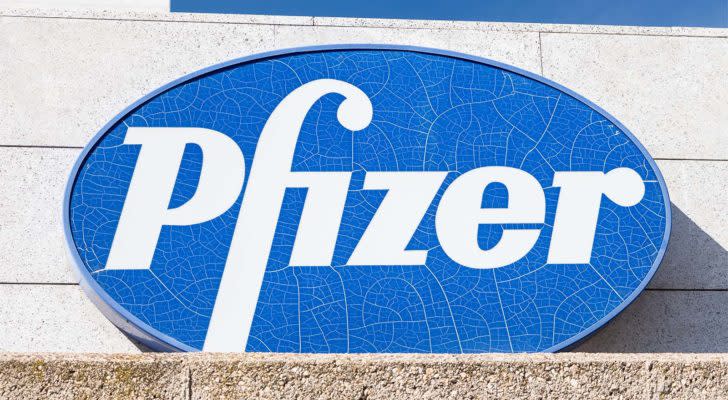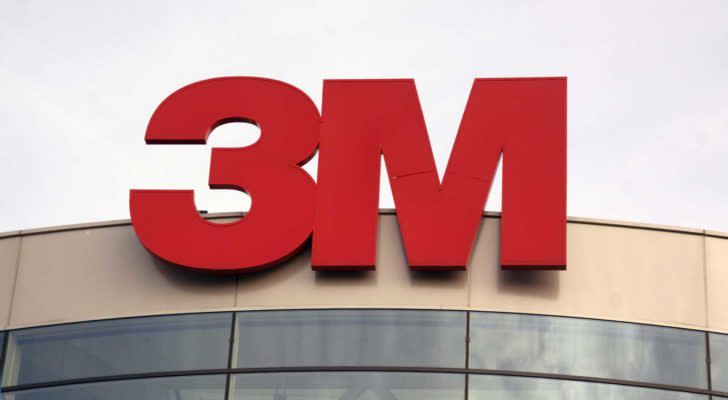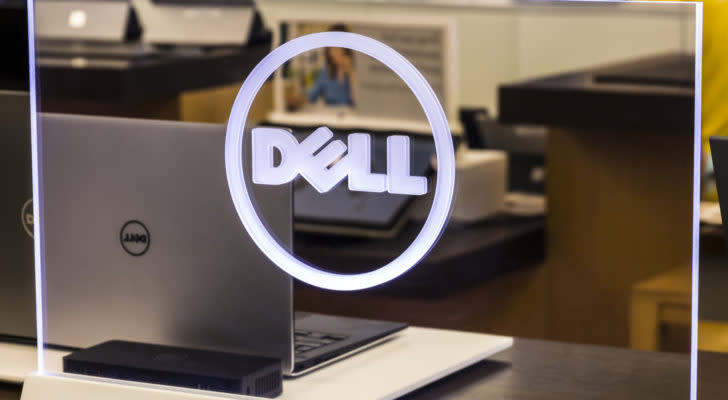7 Tarnished Blue-Chip Stocks to Ditch Now
When investors buy stocks for the long haul, the holding period is ideally forever. But that is not always possible. Valuations may reach unfavorable levels or fundamentals may worsen. When that happens, investors need to re-evaluate the company’s long-term prospects. One of the quickest negative catalysts that will accelerate a blue chip’s safe-haven status is if it gets in the news. That is, news reports that tarnished the company’s branding just might hurt the future returns.
Sometimes headlines try to hurt a company’s branding but are really just noise that investors should ignore. Deeper research into the latest headlines concerning the stock is necessary before acting irrationally and selling. But the biggest “tell” that a company is broken enough that it is time to sell is looking at fundamentals. If revenue is slowing and profits are shrinking, an investment portfolio’s performance will suffer. When that happens, it is time for investors to ditch that holding.
Macroeconomic risks are higher than ever. Devrim Yaman, a finance professor and associate dean at Western Michigan University’s Hawthorn College of Business, said in an email to InvestorPlace that “in 2020, we expect markets to be particularly volatile. This is partly due to the uncertainty surrounding the presidential election in November as well as the primaries before that. The U.S.-China trade war and the economic impact of the coronavirus will likely exacerbate the volatility.”
InvestorPlace - Stock Market News, Stock Advice & Trading Tips
Further, Yaman pointed out the performance disparity between low and high volatility stocks will widen. She said “I expect investors to gravitate towards the high volatility factor in 2020 in order to profit from these fluctuations. This is in contrast to the historical long-term data which shows that overall low volatility stocks earn higher returns than high volatility stocks.”
The combination of macro risks and tarnished brands suggests that investors might want to drop seven of the following stocks.
Blue-Chip Stocks to Sell: Wells Fargo (WFC)

Source: Martina Badini / Shutterstock.com
Wells Fargo (NYSE:WFC) is in the news after U.S. regulators are fining eight former executives over the account scandal. Four years ago, the bank pressured employees to meet difficult sales targets. This resulted in employees opening millions of fake accounts to meet those targets. In the last six months, the stock climbed from a bottom of $43.34 and topped $54.75. And in hindsight, Wells Fargo stock peaked at the end of 2019 ahead of its quarterly earnings report.
The fourth-quarter report had two weak results that suggest investors should ditch the stock. Non-interest income grew by 4% but was offset by a 6% decline in net interest income. The bank blamed low interest rates, which suggests that a further Federal Reserve rate cut will continue pressuring this bank’s results.
Wells Fargo also posted higher litigation accruals, to the tune of $1.5 billion. Bulls may argue that the balance sheet cleanup with the write-down sets a bottom from here. The new CEO is at the beginning phases of orchestrating a turnaround. At a price-to-earnings ratio below 12 times and a dividend that yields over 4%, value investors may speculate by buying WFC stock here.
In a price-to-earnings model, Wells Fargo stock is worth approximately $46 (per finbox.io):
Metrics Range Conclusion Selected LTM P/E Multiple 8.x-10x 9x Selected Forward P/E Multiple 11.1x-13.5x 12.3x Fair Value $41-$50.64 $45.82
For anyone who has held the stock for a long time, selling shares would help avoid further losses.
Cisco Systems (CSCO)
Source: Valeriya Zankovych / Shutterstock.com
Cisco Systems (NASDAQ:CSCO) reported Q2 results that sent the stock falling from $50 to around $47 last week. Non-GAAP earnings per share of 77 cents beat expectations. Yet revenue fell by 4% year-over-year to $12 billion. Despite the mixed results, management declared a 3% hike in the dividend, giving Cisco stock a yield of around 3%. Why sell Cisco when dividends are increasing?
Unfortunately, the 3% dividend hike is small and reflects the weak cash flow. Rumors that it will buy FireEye (NASDAQ:FEYE) are equally troubling. Buying the underperforming business will cost at least $3.7 billion. If the business is slowing — even though it benefits from secular growth trends from 5G, Wi-Fi 6 and 400G –investors should look elsewhere. The ongoing shift to the cloud is not accelerating Cisco’s revenue growth. Conversely, investors could buy Google (NASDAQ:GOOG, NASDAQ:GOOGL) or Microsoft (NASDAQ:MSFT) stock instead.
Cisco’s infrastructure platform and application segments posted falling sales year-over-year. Also, the services revenue growth of 5% is good but slow. At current prices, investors have better options elsewhere.
Pfizer (PFE)
Source: Manuel Esteban / Shutterstock.com
Pfizer (NYSE:PFE) posted yet another quarterly earnings report that missed expectations. So unless the company achieves revenue growth of at least 5% annually over the next five years, shareholders should sell. The stock pays a dividend that yields 4.2%, but anyone who demands upside appreciation has many other drug stocks to consider instead.
Sales of Ibrance, which treats metastatic breast cancer, rose 23% and is potentially a $5-billion-a-year product. But this year is a make-or-break year for the drug. CEO Albert Bourla said that “We continue to expect our two event-driven Ibrance early breast cancer programs, Penelope B, and powers to read out in late 2020 and early 2021 respectively. If successful, and following regulatory approval, these programs could double the number of patients eligible to benefit from Ibrance.”
Any negative data read for Ibrance may send Pfizer stock lower in 2020.
Pfizer’s sale of its Upjohn unit will bring in $12 billion in cash proceeds, which strengthens its balance sheet. Looking at the full year 2020, the company forecasts revenue of $48.5 billion to $50.5 billion. This weak outlook is due to the loss of exclusivity for Lyrica — a pain medication — in the U.S. CFO Frank D’Amelio said “the midpoints of these ranges imply … higher adjusted R&D expenses and higher adjusted other income, which reflects earnings from the consumer healthcare joint venture.”
Walgreens (WBA)
Source: saaton / Shutterstock.com
The market fooled investors into buying Walgreens (NASDAQ:WBA) stock in November 2019. A leveraged buyout by KKR (NYSE:KKR) would value the company at $85 billion. The deal is unlikely because it would require taking on too much debt. And so, Walgreens stock fell from $62, instead of heading toward the $71 take-out price.
Walgreens acquired 1,932 stores from Rite Aid (NYSE:RAD), solidifying its play as a retail pharmacy. But CVS Health (NYSE:CVS) proved that vertical integration with a healthcare plan provider is a better approach. Walgreens posted revenue of $34.3 billion, up 1.6% over last year. In effect, the proposed buyout was the only positive catalyst lifting the stock.
CVS Health posted a different story. The company reported revenue growing 22.9% to $66.9 billion. Adjusted operating income rose 1.3% to $3.8 billion. It looks like holding CVS stock and selling Walgreens stock would make the most sense for 2020. Besides, Walgreens is busy with a transformational cost management program instead of growing revenue. This will bring more than $1.8 billion in annual cost savings by 2022. It also led to a free cash flow generation of $674 million in the first quarter. While this program is on track, CVS offer investors better revenue growth now.
Walgreens is still struggling with “noise in the second quarter.” This suggests that the 13% headwind in earnings per share from the program will hurt WBA stock for now.
3M Company (MMM)
Source: JPstock / Shutterstock.com
3M Company (NYSE:MMM) is trading at levels not seen since 2017. Even after the stock fell from a yearly high of $219 to the $160 level, the stock still trades at a premium valuation. Its price/earnings-to-growth (PEG) ratio is around 4.5 times.
Investors could buy Honeywell (NYSE:HON) and pay a PEG of 2.8 times. So, it does not make much sense to continue holding 3M stock. In the fourth quarter, 3M took a restructuring charge that shaved 20 cents from its EPS. Management said that the $134 million charge “includes streamlining our organization by reducing approximately 1,500 positions spanning all business groups, functions and geographies.”
Cutting staff and reorganizing the units is the same as shuffling the deck. The lower headcount will save on costs but fails to grow the company. In fact, U.S. organic growth fell 3% in Q4. Transportation, electronics, safety and industrial businesses all performed poorly. Revenue from the electronics unit dragged Asia-Pacific revenue, which also fell 3%. Business dropped by 7% in Japan.
Cautious investors may model revenue growing at no more than 2% annually in a 10-year discounted cash flow (DCF) model: revenue exit. Under the following assumptions, MMM stock is worth under $140 a share.
Metrics Range Conclusion Discount Rate 8%-9% 8.5% Terminal Revenue Multiple 2.8x-3.8x 3.3x Fair Value $117.66-$161.85 $138.89 Upside -26.9%-0.5% -13.7%
Table courtesy of finbox.io
Dell Technologies (DELL)
Source: Jonathan Weiss / Shutterstock.com
Once a publicly traded company, then privately traded, and public again, Dell Technologies (NYSE:DELL) is an inexpensive stock. It trades at a trailing P/E of 10.4 times and a forward P/E below 8. This just shows that investors should avoid the stock for a reason. The company bought EMC but did not have any synergies with it. It struggled to grow EqualLogic, a storage company. Conversely, shares of Seagate (NASDAQ:STX) and Western Digital (NASDAQ:WDC) are sharply higher over the last few years.
Insider selling of DELL stock is another bearish signal. On the flip side, investors seeking an undervalued stock may look at HP (NYSE:HPQ) instead. If Xerox (NYSE:XRX) succeeds in buying it, HPQ stock will reward its investors.
Dell’s outlook is hardly encouraging, either. The company forecast fiscal 2020 sales of $91.8 billion to $92.5 billion. This is below the $93.5 billion consensus estimate. And in Q3, the net revenue grew by just 2% to $22.8 billion. So, as it spends its fiscal 2020 paying down the debt of around $5 billion, it still has $44.7 billion left.
Dell stock has a good value score:
DELL Industry S&P 500 Value Score 86 57 74 Price-to-Earnings 10 17.8 25.5 Price-to-Sales 0.4 0.7 2.4
Data courtesy of Stock Rover.com
The quality score suggests otherwise. Notice the low operating margin:
DELL Industry S&P 500 Quality Score 48 52 80 Gross Margin 30.8% 27.8% 29% Operating Margin 2.4% 4.4% 13.4% Net Margin 4.2% 4.1% 9.6%
Data courtesy of Stock Rover.com
Arista Networks (ANET)
Source: Sundry Photography / Shutterstock.com
Arista Networks (NYSE:ANET) posted Q4 revenue falling 7.3% over last year to $552.5 million. Earnings per share came in at $3.25. At a forward P/E close to 22 times, investors may not want to hold this market-valued stock when the IT sector is slowing down. So with both Cisco and Arista reporting a slowdown in the business, the risk of further downside is high.
Arista posted revenue of $552.5 million and $2.4 billion for the year. Its 5-year total addressable market is $30 billion by 2024. Unfortunately, markets price stocks for the near term. If businesses are not increasing their orders for the company’s campus Ethernet switch, the stock may correct further. The data center Ethernet switch business is supposed to offset the slowdown in switches. But data center revenue growth will not pick up until 2022.
The company cut operating expenses and spent less on research and development. Headcount increased in sales and marketing, offset by a drop in other sales costs. By right-sizing the business, Arista may weather the storm. It might grow its cash from operations, too. In Q4, it generated $327 million of cash from operations. This allowed it to authorize a three-year $1 billion share buyback.
Most analysts rate the stock a “hold,” according to TipRanks. With little upside and a fair value between $197-$232, consider selling the stock.
Chris Lau is a contributing author for InvestorPlace.com and numerous other financial sites. Chris has over 20 years of investing experience in the stock market and runs the Do-It-Yourself Value Investing Marketplace on Seeking Alpha. He shares his stock picks so readers get original insight that helps improve investment returns. As of this writing, Chris Lau did not hold a position in any of the aforementioned securities.
More From InvestorPlace
The post 7 Tarnished Blue-Chip Stocks to Ditch Now appeared first on InvestorPlace.







